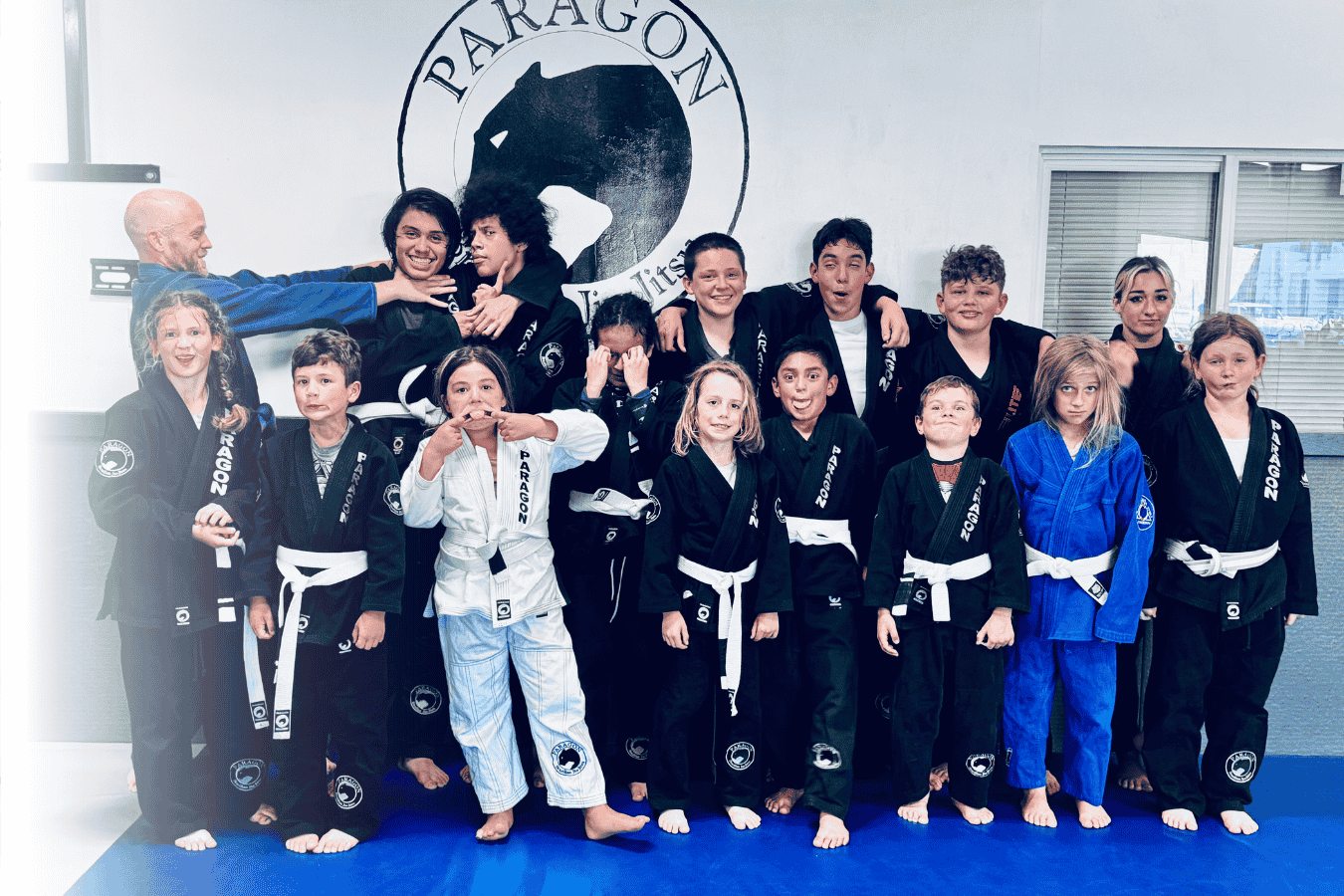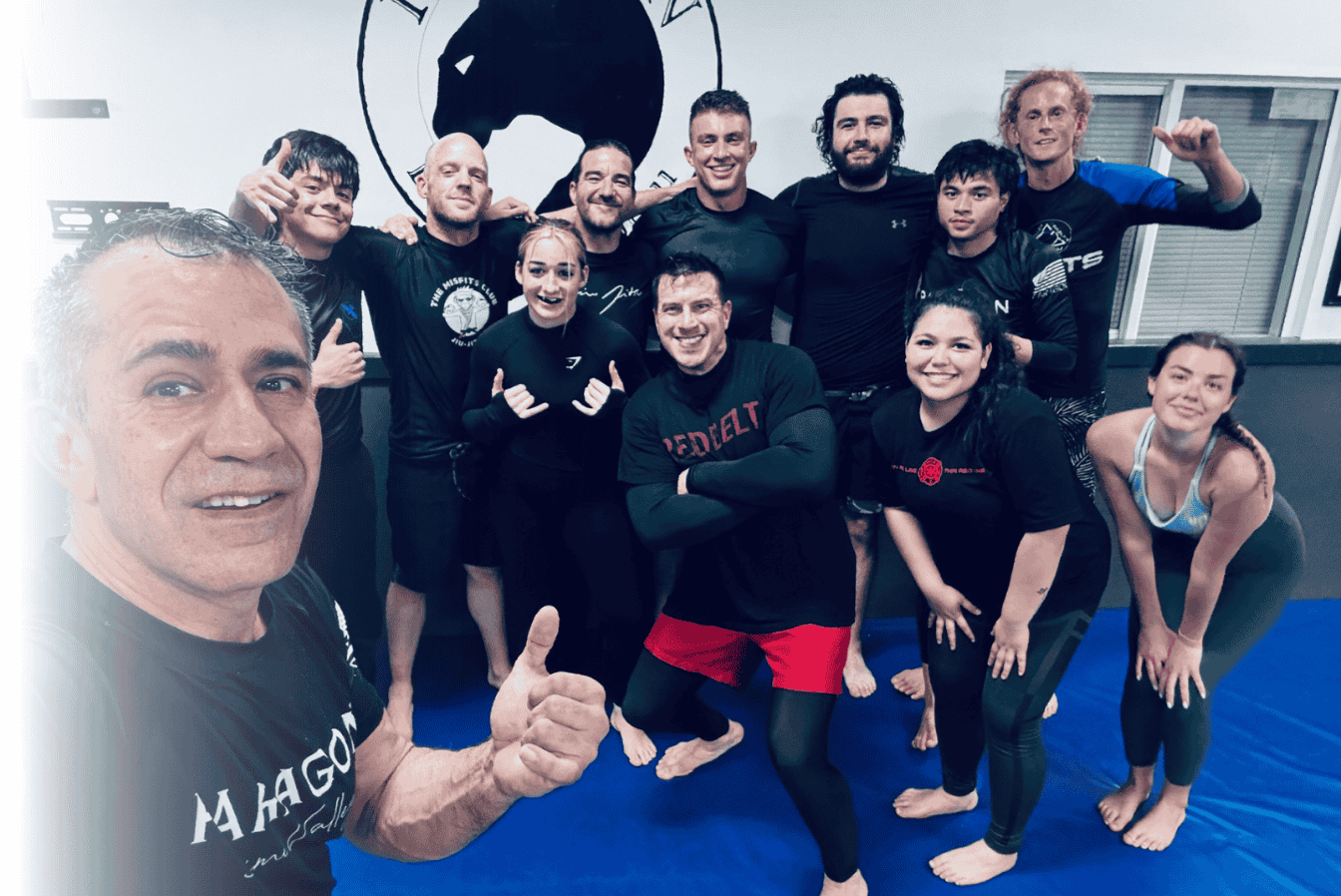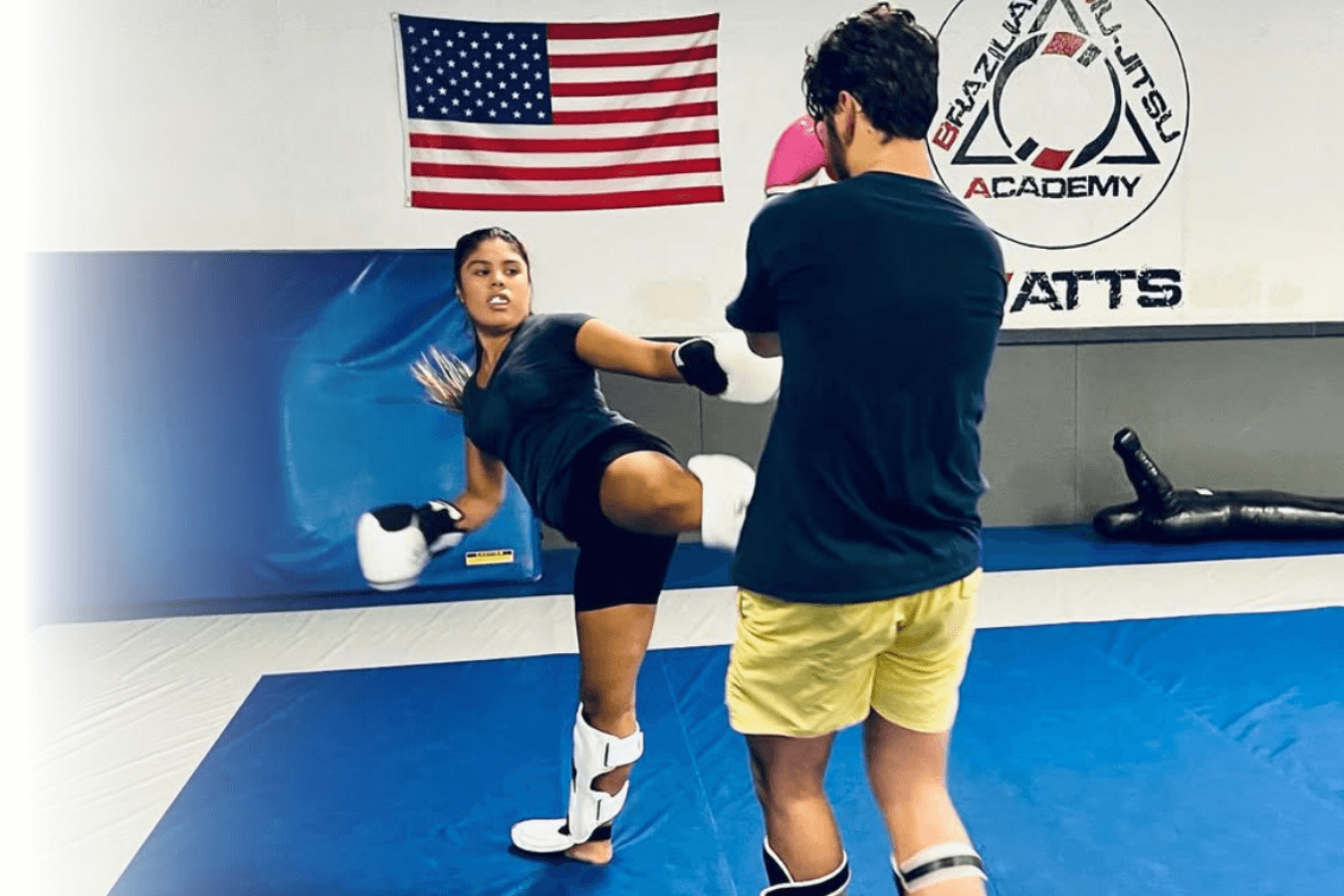The Paragon Simi Valley Blog


April 11, 2025
If you’ve ever stepped foot in a Brazilian Jiu-Jitsu (BJJ) academy or watched a match online, you’ve likely noticed the colorful belts tied around each athlete’s waist. But what do they mean—and more importantly, how do you earn one? Whether you're a complete beginner or a parent researching martial arts programs for your child, understanding the BJJ belt system is crucial. It not only tracks progress, but it’s also a symbol of discipline, growth, and achievement. At Paragon Simi Valley , we break down this journey in a way that’s both rewarding and family-friendly. What the Brazilian Jiu-Jitsu Belt Colors Mean Unlike many other martial arts, BJJ doesn’t hand out belts quickly. This is a journey of years—sometimes even decades. White Belt (Beginner) Focus: Survival and defense Timeframe: No set minimum Skills: Basic positions like guard, mount, escapes White belts are the foundation of every journey. At Paragon Simi Valley, our experienced instructors guide beginners through safe, effective movement patterns while emphasizing real-world self-defense. Blue Belt (Competent Defender) Focus: Offense and defense Timeframe: 1–2 years of consistent training Skills: Guard passing, submissions, sweeps This is when students start "seeing the matrix"—learning to transition and set up submissions under pressure. Purple Belt (Technical Specialist) Focus: Strategy and creativity Timeframe: Typically awarded after 4–5 years of training Skills: Personalized style, chaini ng techniques, controlling pace Purple belts are often seen as semi-instructors. Many assist in teaching kids' and beginner classes here at Paragon. Brown Belt (Instructor Level) Focus: Precision and refinement Timeframe: 6–8 years into the journey Skills: Efficiency, fluid transitions, advanced submissions By this point, students are polishing their game and preparing for the highest rank. Black Belt (Expert) Focus: Mastery Timeframe: 8–12+ years Skills: Complete understanding of BJJ, leadership, and teaching Black belts at Paragon Simi Valley embody everything we stand for: skill, humility, and lifelong learning. Why the BJJ Belt System Works for Adults and Kids Alike At Paragon Simi Valley, we see how the belt system motivates students across all age groups. Here's why it works so well: Goal-Oriented: The belts provide clear milestones. Confidence Boost: Each promotion reflects hard-earned progress. Fitness Through Fun: BJJ is a full-body workout that never feels boring. For Kids in Martial Arts Programs: Structured Progress: Kids thrive when they have goals to work toward. Discipline & Focus: The belt system teaches patience and perseverance. Self-Esteem: Kids light up when they earn that next belt! Want to explore our kids' martial arts options? Check out our programs and see how we make learning fun and empowering. How to Progress Through the BJJ Belt System It’s not just about showing up—though consistency is key. Here’s how students earn their belts: 1. Consistent Attendance Most academies, including ours, require consistent attendance before students are eligible for a promotion. 2. Demonstrating Skill Positional awareness Effective technique under resistance Rolling (live sparring) with control and confidence 3. Instructor Evaluation At Paragon, promotions are based on merit , not just time. Our instructors take a holistic view: mindset, effort, technical knowledge, and growth. 4. Stripe System Between belts, students earn “stripes” as smaller milestones. This keeps motivation high and feedback frequent. Tips to Succeed on Your BJJ Journey Whether you're just getting started or helping your child progress through the ranks, here’s what works: Be consistent – Aim for 2–3 sessions per week. Ask questions – Our instructors love to help. Keep a journal – Track what you're learning and where you’re improving. Train with intention – Focus on one area at a time (guard retention, passing, etc.). Stay humble – Every belt is just the beginning of the next level. Still have questions? Visit our About page to meet the instructors who will guide you every step of the way. Common Questions About the BJJ Belt System How long does it take to get a black belt in BJJ? On average, it takes 8 to 12 years, depending on consistency, effort, and progression. Can kids earn a black belt in BJJ? Kids have their own belt system. Once they reach age 16, they may transition into the adult ranks starting at blue belt. Do you have to compete to earn belts? Competition can help—but it’s not required. At Paragon Simi Valley, we promote based on performance in the academy, mindset, and growth. What if I miss time due to injury or life? No problem. BJJ is a lifelong journey. We’ll work with you to get back on track. Why Choose Paragon Simi Valley for Your BJJ Journey? Experienced Coaches – Decades of combined teaching and competition experience Family-Friendly Vibes – Welcoming to beginners of all ages Fitness + Self-Defense – Build real-world skills while getting in shape Convenient Location – Right here in the heart of Simi Valley We pride ourselves on making Brazilian Jiu-Jitsu accessible, rewarding, and fun for everyone. Conclusion The Brazilian Jiu-Jitsu belt system is more than a ranking—it’s a personal roadmap. Whether you're an adult looking for a new fitness challenge or a parent searching for a structured, goal-oriented activity for your child, BJJ offers a path filled with growth, resilience, and transformation.

April 5, 2025
Muay Thai, also known as the "Art of Eight Limbs," is a dynamic and powerful striking art that uses fists, elbows, knees, and shins. If you're new to Muay Thai, learning effective combinations will help you build confidence, improve coordination, and prepare you for more advanced techniques. In this guide, we'll cover the best Muay Thai combos for beginners, explaining how to execute them properly and why they work. Why Muay Thai Combos Matter Combos in Muay Thai aren't just about throwing random strikes; they are carefully structured sequences designed to maximize efficiency, speed, and power. Learning the right combinations helps beginners: Develop fluid movement Improve reaction time Build muscle memory Enhance striking accuracy Gain confidence in sparring or self-defense situations Essential Muay Thai Combos for Beginners 1. Jab – Cross – Right Kick This is one of the most fundamental Muay Thai combinations. It sets up the opponent with punches before delivering a powerful kick. How to do it: Throw a quick jab with your lead hand. Follow with a straight cross from your rear hand. As your opponent reacts to the punches, pivot on your standing leg and throw a right roundhouse kick to their midsection or leg. Why it works: The punches distract your opponent, making them vulnerable to the kick. It builds a strong foundation for more advanced combos. 2. Jab – Cross – Left Hook – Right Low Kick A slight variation of the first combo, this adds a hook to disrupt your opponent’s balance before delivering a low kick. How to do it: Throw a jab to measure distance. Follow with a strong cross. Add a left hook to the side of the opponent’s head. Finish with a powerful right low kick to their lead leg. Why it works: The hook disrupts your opponent’s stance. The low kick damages their base, limiting movement. 3. Jab – Rear Teep – Right Cross – Left Body Kick This combo integrates the teep, or push kick, to control distance before following up with power strikes. How to do it: Throw a quick jab. Use your rear teep to push your opponent back or off balance. Step forward and land a powerful right cross. Follow up with a left roundhouse kick to the body. Why it works: The teep creates space and disrupts your opponent’s rhythm. The body kick is an excellent way to score points and inflict damage. 4. Cross – Left Hook – Right Knee This combination works well in close-range combat, perfect for when your opponent moves forward. How to do it: Throw a right cross to initiate. Follow with a tight left hook. Step in and drive a strong right knee to the opponent’s midsection. Why it works: The hook keeps your opponent from countering immediately. The knee is a powerful close-range weapon. 5. Jab – Cross – Switch Kick A great way to mix up your attacks, this combo utilizes a switch kick to add unpredictability. How to do it: Start with a quick jab. Follow with a cross. Switch your stance quickly and deliver a left kick to the body or head. Why it works: The switch kick catches opponents off guard. It builds speed and versatility in attacks. Common Mistakes and How to Fix Them 1. Telegraphing Strikes Many beginners make their movements too obvious, allowing opponents to anticipate attacks. Keep your movements sharp and efficient to avoid this. 2. Poor Balance Leaning too far forward or not pivoting correctly can throw off your balance. Maintain a strong stance and practice proper footwork. 3. Neglecting Defense Always keep your hands up and return to a guarded position after executing a combo to avoid counterstrikes. FAQs About Muay Thai Combos How often should I practice these combos? Practice at least 3-4 times a week to develop muscle memory and fluidity. Should I practice on a heavy bag or with a partner? Both are beneficial! Heavy bags help with power and endurance, while partner drills improve accuracy and timing. What should I focus on as a beginner? Focus on proper technique, balance, and fluid transitions between strikes. Conclusion Mastering these Muay Thai combos will help you build confidence and sharpen your striking skills. If you're looking for expert guidance, Paragon Simi Valley offers top-notch training in a welcoming environment. Book your free trial today and start your Muay Thai journey!

April 5, 2025
The Muay Thai clinch is one of the most essential yet challenging aspects of the sport. Whether you're training for competition, self-defense, or fitness, a strong clinch game can give you a huge advantage. It allows you to control your opponent, set up devastating knee strikes, and neutralize aggressive attacks. In this guide, we'll break down the best strategies to improve your Muay Thai clinch, from grip strength to positioning and countering. Why a Strong Muay Thai Clinch is Important Control: The clinch allows you to dictate the fight's pace and position. Offensive Power: A strong clinch sets up knees, elbows, and sweeps. Defense: It helps you nullify your opponent’s attacks and tire them out. Energy Efficiency: A good clinch can conserve energy by preventing wild exchanges. Key Techniques to Strengthen Your Muay Thai Clinch 1. Develop a Strong Grip Your grip is crucial for controlling your opponent in the clinch. A weak grip means losing control and openings for counters. Train with wrist rollers, rope climbs, and grip strengtheners. Use towel pull-ups to mimic the clinch grip. Work on squeezing exercises to maintain pressure during clinch exchanges. 2. Master the Proper Hand Positioning Keep your elbows tight to prevent opponents from breaking your grip. Control the inside position—aim to get both hands behind your opponent’s head. Use a locked wrist grip instead of interlocking fingers to prevent injuries. 3. Improve Your Core and Neck Strength A strong core and neck allow you to absorb strikes and maintain posture. Train your core with Russian twists, planks, and hanging leg raises. Strengthen your neck with bridging exercises and resistance band training. Maintain a strong, upright posture to prevent being pulled down. 4. Learn to Off-Balance Your Opponent Controlling balance can set up devastating knee strikes and sweeps. Use small, side-to-side movements to break their stance. Pull and push at angles rather than straight forward or back. Control their hips and shoulders for maximum off-balancing effects. 5. Train Effective Knee Strikes A solid clinch allows you to land knees without resistance. Use hip thrusting drills to generate power. Train repetitive knee strikes against a heavy bag. Focus on switch knees and diagonal knees for variation. 6. Master Clinch Counters and Escapes A great clinch game includes knowing how to escape and counter. Swim inside: Reposition your hands inside your opponent’s grip. Frame and push away: Use your forearms to create space and reset. Break the grip with foot movement: Step to the side and pivot to weaken their control. Common Mistakes in the Muay Thai Clinch (and How to Fix Them) 1. Weak Grip Strength Fix: Train grip-specific exercises regularly. 2. Poor Posture Fix: Keep your back straight and avoid hunching over. 3. Holding the Clinch Too Long Fix: Be active—land strikes or reposition instead of staying static. 4. Forgetting to Defend Against Knees Fix: Use your forearm or elbow to block incoming knee strikes. 5. Not Controlling Angles Fix: Pivot and use small angles to maintain control and land effective strikes. Frequently Asked Questions How long does it take to develop a strong clinch? It depends on your training frequency and dedication, but noticeable improvements can come within a few months of consistent training. Can a beginner train clinch effectively? Yes! Start with grip strength exercises, proper positioning drills, and basic knee strikes before progressing to live clinch sparring. How can I practice clinch work if I don’t have a training partner? Use a heavy bag to practice hand positioning, knee strikes, and off-balancing drills. Conclusion A strong Muay Thai clinch can elevate your game, giving you control over opponents and opening up high-percentage striking opportunities. Focus on grip strength, positioning, and balance to develop a dominant clinch game. Ready to put your clinch skills to the test? Sign up for a free trial class at Paragon Simi Valley today and take your Muay Thai training to the next level!


